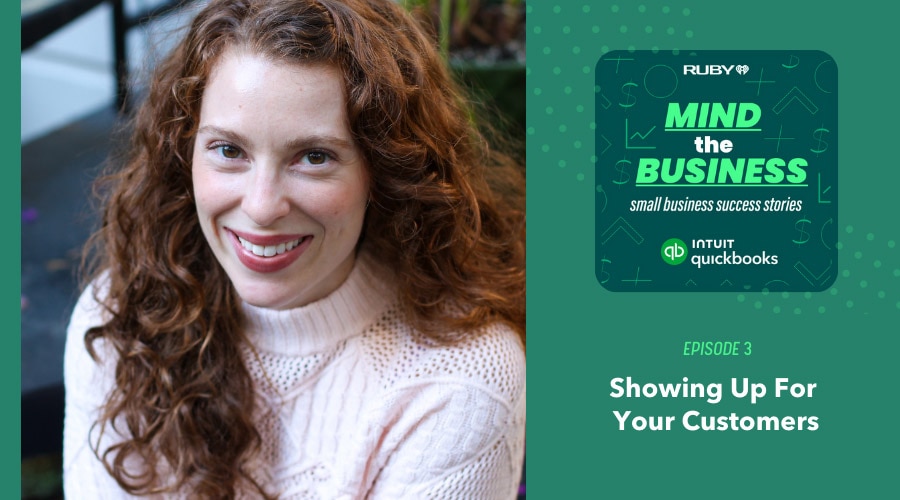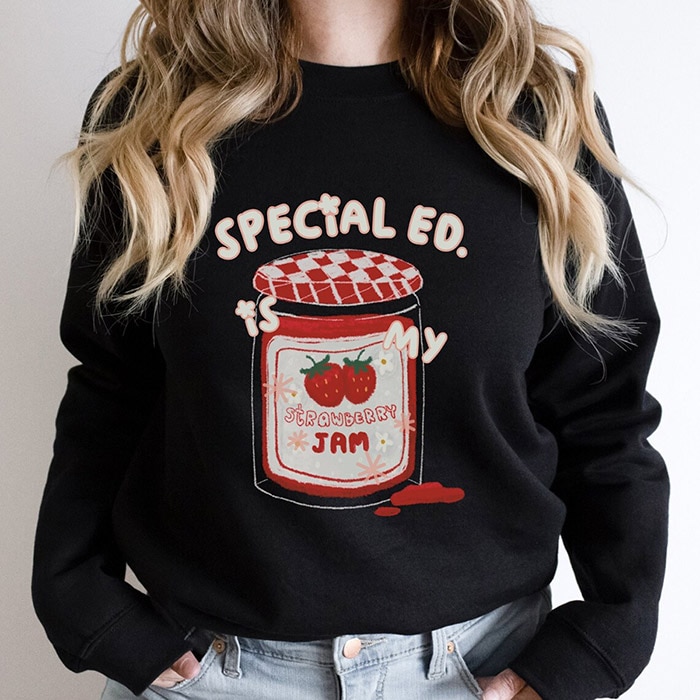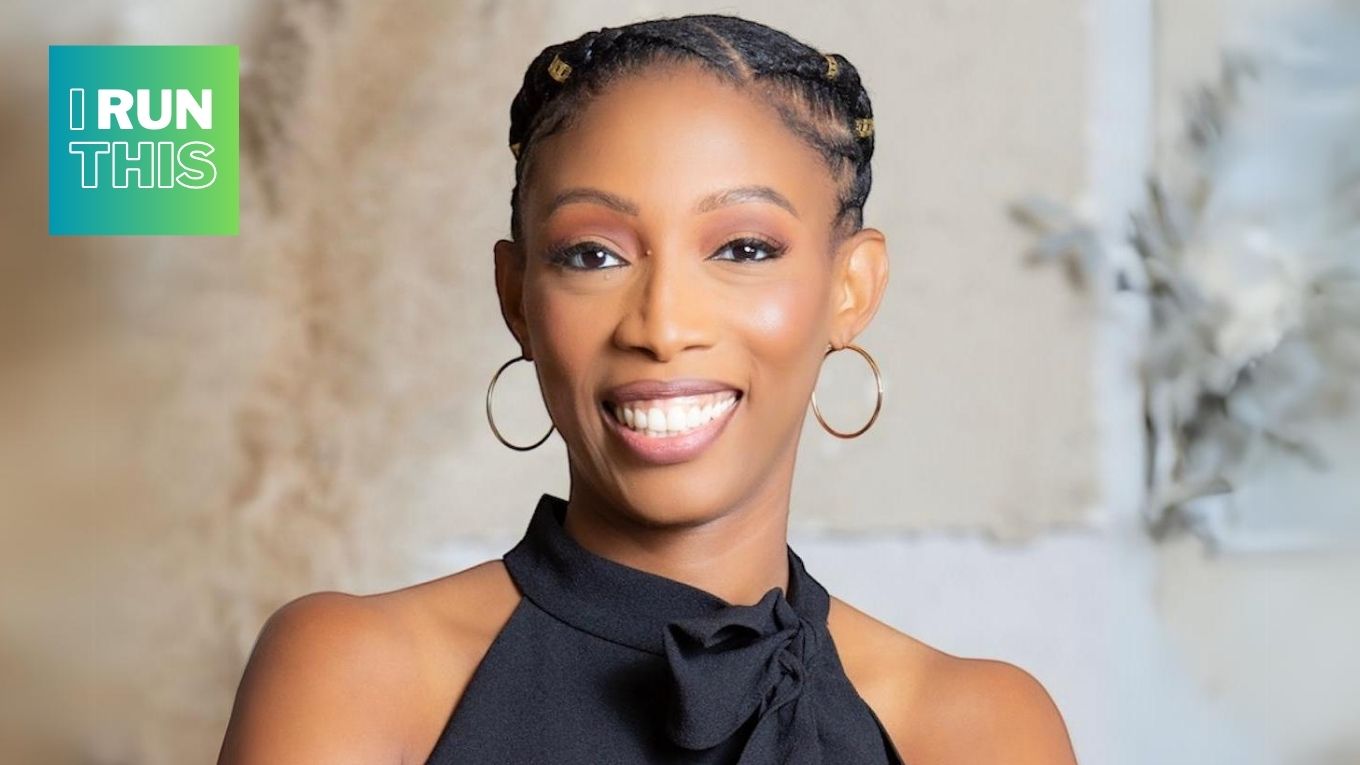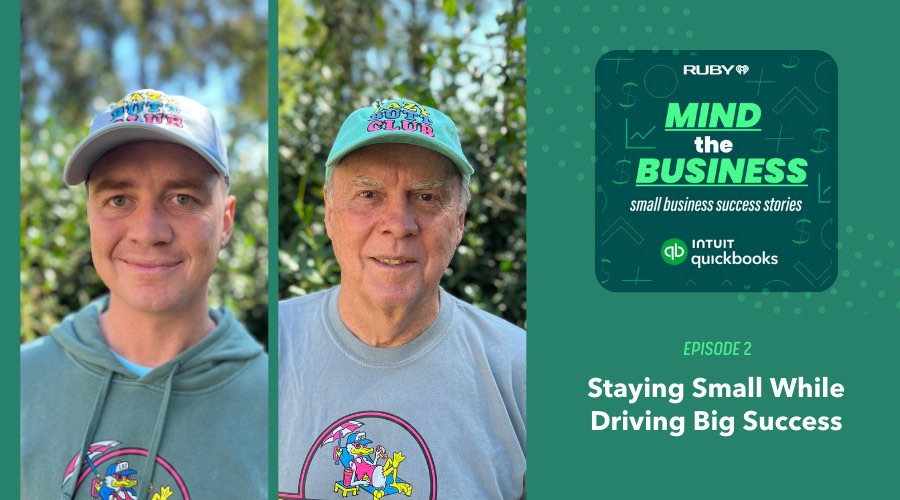Owning a small business can be one of the most rewarding and challenging things a person does. Amid an uncertain economy and ever-evolving consumer trends, there is a lot to figure out and navigate to ensure your business thrives. Join hosts Jannese Torres (Yo Quiero Dinero) and Austin Hankwitz (Rate of Return) as they connect with small business owners and hear their stories about managing the ups and downs of starting and growing a small business. Listen and learn valuable lessons from their experiences that will guide you along the way through your own small business journey.
70% OFF QuickBooks
for 3 months Ends 12/5

Showing up for your customers
Jordan Rose is an Etsy seller who operates her shop, Fresh Prints of SF, out of her own home in San Francisco. As a designer and illustrator, Jordan creates original designs for apparel, totes, posters, printables, and more. As a neurodivergent individual, Jordan is inspired by her own experiences with inclusion, advocacy, as well as the latest trends.
Austin Hankwitz: Jordan, welcome to the show.
Jordan Rose: Hi, thank you for having me.
AH: So excited to dive in here. But first and foremost, the name — Fresh Prince of SF. What an incredible, awesome title. Just the name of the company gets me so excited. How the heck did you come up with this?
Jordan: Honestly, I don't remember. I think I was just probably browsing Etsy and looking at all the different shops and I think I wanted to do something that was San Francisco-specific because I'm originally from Chicago and I moved to the West Coast. That's the coolest thing I thought that I've ever done. And as someone who has not always lived here, I would really think like, “Oh, wow, a San Francisco shop. That must be a very cool person.” And people love puns.
AH: So walk me through the actual company itself. How did you come up with the idea for your Fresh Prints?
Jordan: Honestly, it was all my sister. I wish she was here with me right now. She got really excited about Etsy and printables and she was like, I think we'd both be really good at this. Do you want to sit down and figure out how to open a shop with me? And so we both sat down together and came up with our own shops and it became like a bonding thing. We would send each other things back and forth, or maybe we'd sit on FaceTime while making designs on our computers during our free time and seeing who could make the most that month or whatever it was. So yeah, we've had a lot of fun with it. And she has taught me so much. Her shop is called Jillian Ray Today. I have to say it. I have to say it like 70 times because it's a fabulous shop.
Jannese Torres: Can you tell us about the moment where you realized how good you were at making these designs and illustrations and decided to sell them on Etsy?
Jordan: So I was a librarian for six years previously. And when you're a librarian, people think you just sit around and read books all day. But it's actually a lot different, and I spent a lot of time creating marketing materials for some of the libraries I worked at. It was a very large majority of a librarian's time to sit there and come up with Instagram posts, to come up with flyers, to come up with whatever that's going to appeal to your audience. So I started practicing very, very early in my librarian career — not really thinking I was doing anything special and having my fellow staff and people around me say, “Oh, Jordan, will you do this for us? Because you're pretty good at it.” And I was like, Yeah, you know, it's fun. I actually really enjoy it. And I never really thought that it was going to be something I would ever pursue. But It's worked out pretty lovely.
AH: So it sounds like you've never formally worked as an illustrator or designer in the past. It was more of an inspiration side thing that just sort of began to blossom.
Jordan: Yeah, it was definitely a side hustle to start. So I was doing it while I was still a librarian, and then I decided to leave libraries and work as an illustrator and as a fitness professional. I still work in the library a little bit, but now I do illustration as well, like a full-blown career, which is fulfilling in different ways, all of these different careers. I can't pick one thing because I can't seem to get one job to fill my entire cup up. I have to do a bunch of little things in order to feel like the human I want to feel like.
JT: I love that. And I want to transition to some of the products you offer on your Etsy store. You've listed them as being for teachers, fitness lovers, and kids. How do you see your audience or your consumer base? And who do you focus on making these products for?
Jordan: Well, at first. I think I probably started with teachers. The teacher thing felt like a really easy niche for me to step into because I grew up with my mom, who was constantly designing her classroom and constantly grading papers and talking about the kids. And my sister was an art teacher for a really long time. My cousins — everybody. I felt like I could really be in the mind of the education individual. And it was an easy niche that I could fill. I knew that teachers were already on Etsy, so it was kind of a strategic thing. And I know how hard teachers work, and they're willing to pay two bucks to not have to spend an hour and a half on a poster for their classroom. So I could help them out.
I can also create stuff that feels good, and I think ultimately, that's a really big part of the Etsy shop in general. Being able to create inclusive designs. At the end of the day that's a really, really large part of why I created Etsy.
JT: I love how your experience as a librarian has tied into how customers experience your company. And so let's dive into that customer experience that you've built within your company. First off, can you tell me what customer service means to you?
Jordan: Well, if you would have asked me 10 years ago, customer service would have meant doing everything in my power to make sure that person walks out happy. But it's different now because I have a bit more experience in life and I know that when you behave that way, you burn out really, really, really quickly. So customer service…I would say it’s doing what you can in the moment to make someone feel heard and understood. Doing what you can within the amount of time you have and the amount of money you have to be able to help them get to whatever they need. Because at the end of the day, I do want everyone to have a positive experience.
JT: I think what you're narrowing in on is communicating so that people can understand expectations. So you let folks know that you are running this business out of your home. This is something you're very transparent about. So how do you think that plays into the relationship that your customers have with you? Do you think it helps set expectations versus working with a big warehouse-based company or somebody who's got like a conglomerate?
Jordan: To a degree, yes. I mean, for me personally, I've not had a negative Etsy experience thus far, and I'm sure that plays into it. I really am just someone sitting at home creating designs that I think are cool. And if you like them — fabulous. And I'll help you out.
But for the most part, people understand that Etsy is not a huge warehouse situation. Like, it's not Target. You can't just return it. It's not that simple. Also, I'm selling inclusive things to the disability community, or stuff to the fitness community. Those tend to be pretty loving, kind humans. I would like to imagine that the people that I'm selling to are happy to receive the stuff.

JT: I love that. So, obviously, mistakes happen. How do you handle that? If you were in a situation where a customer was unsatisfied with the product, or things got delayed, or it got lost in the mail…how do you manage those challenges or issues if they arise?
Jordan: It definitely depends on the situation. If it's something that's lost in the mail, then usually I would reach out to my printing vendor. That would be like the first step. I think it's only happened one time and they were able to replace it immediately. So if it's something small like that, then yes. If they're just like, “This shirt is ugly. I don't want it.” I would be like, “Alright, well, that's what it's like when you buy something.”, And then if it was damaged or something, I would reach out to my printer to see if they were willing to eat the cost, which I think usually is the case. Or it would come out of my pocket and I would be happy to do that, especially with the community that I am serving.
JT: Right. And you know, a happy customer is a loyal customer and is usually a repeat customer. So once you do have that happy customer, are you doing anything to kind of nurture them to come back, order more stuff? How does that work?
Jordan: There’s automated emails that you're able to set up through Etsy. It's a whole system where it's like…if someone has favorited something, I'm going to send them a coupon and this message. If someone has purchased something and then they have something else in their cart…you're gonna send them this kind of message. And Etsy has it set up for you already. And if you want them to be different, it's a different message for everyone.
AH: How do you attract new customers to your Etsy store?
Jordan: There's a lot of stuff in the background. It's getting seen in the algorithm. That's sort of how I have approached it because I know I'm so bad at social media. I knew that social media was never going to be the way I was going to hook people in. So my boyfriend works in tech — that's how I landed in San Francisco — and overhearing all their conversations about how stuff works…I'm able to surmise that SEO matters. So I work on that for my shop, and I think that's really what helped. I sort of hit it big for my little shop with one poster print, and that got me into it.
If you asked me to recreate it, I could not. But the language I used within the description and the tags I used behind the scenes and how I categorized it seemed to be some kind of secret sauce. And it worked. I haven't hit it quite as big with some of my other products, but other products are able to be seen because that first product is seen.
AH: So I'm hearing tags and categories for the fellow Etsy sellers out there listening right now. Do you have any piece of advice to help them get seen by the algorithm?
Jordan: There's a tool called Everbee and it's very useful. It's a plug in that you add on to your browser, and then whenever you look up an Etsy shop, you can see the bones of the Etsy shop. So I made a shirt that has a set of walking canes — like a mobility aid cane. If you were making a shop and wanted to make a shirt that looks like that — you’d want to know if the shirt sells at all. You could open up the Everbee plug in and do a product analysis or a shop analysis and Everbee would tell you how many of those sweatshirts or shirts have sold in its lifetime, when it was posted, how many shirts sell a month, how many people see it. Like, it'll just give you a ton of data.
Tools like that can be super, super valuable. And go look at mid-range shops. Do not go look at the most successful shop that has two million sales. Overall, go look at a person who's right in the middle. My dad used to always say, you never want to be the person at the top, and you never want to be the person at the bottom. Stay right in the middle. Can you tell him from the Midwest? So go look at the middle shop and look at their tags, because if the person in the middle is popping up in the algorithm, they're popping up with hard work, and you're gonna mirror their hard work. The person at the top is…they've probably been there for a long while and the algorithm favors them. So it doesn't matter what they post. Once you get to a certain level, you stay at the top.
AH: Gotcha. And, you know, speaking of this t-shirt design with the mobility cane on it, you know, you've done a very good job of having inclusion be a major theme with your shop. So what inspired you to create products for people who may have difficulties seeing themselves in the designs of other companies?
Jordan: People want to be seen. I think over the last couple years, we see that more and more in every type of media. People want their stories to be heard. They want to see themselves reflected back in the media they're consuming. And it's the same thing with clothing. Truly. That's why I got into libraries. I wanted to be the person that saw kids after school and was like: “You had a bad day. I see you. You're okay. We're okay. It's all gonna be fine.” And I come from a family of neurodivergent individuals. I'm a neurodivergent individual. I have two twin nieces that are autistic, and when they were diagnosed with autism, it was a world of learning about autism that I just hadn't experienced before.
\With that comes an entire universe that opens up and you realize there's a lot of people who are not being seen, heard, recognized, or celebrated.
JT: How do you let customer feedback inspire what you create next?
Jordan: So my sister's job — there was the cutest little boy, and his mom posted a picture of him in the shirt that my sister had designed. It's a little kid with ear protectors on — like noise canceling headphones. Often people with autism or ADHD wear them to help cancel out the noise around them, because sensory-wise, it can be too much. And he is featured in this feedback photo wearing the shirt with his ear protectors on in the coolest sweater I have ever seen in my life. It's so adorable and the mom was saying in the review how her son absolutely loves wearing the shirt and he's super proud of it. It's exactly why my sister and I do this and why we get joy out of doing this and why I keep coming back and making designs. Even if nobody sees the shirt that I spent six hours on — why do I come back and do another one? Because there's an adorable little boy feeling seen and being excited to wear something I made. And that's pretty freaking cool.
JT: Your story is so inspiring. And, you know, as a solopreneur, many of us have to wear multiple hats…even some that we did not anticipate. So how do you balance the zone of genius that you have with creating these new products and, you know, finding opportunities to serve your clients? And then the less fun parts of business like invoicing and taxes and all of that stuff. How do you balance the not-so-fun stuff with the fun stuff.
Jordan: I'm really bad at it, to be honest with you. I'm just really bad at it. And I think it's okay to be a flawed human, you know? Like, we're not going to be perfect at everything. Honestly, I gave up perfectionism not that long ago. And it was so freeing when I did — to be able to be like, “I'm going to make mistakes. I'm going to skip some days.” I used to live a very rigid life where I would aim to hit a deadline six days in advance, so that I never got to the point where I'm running around so stressed out, in pure panic, and having to work 10 million miles a minute. So I used to complete all my projects — I mean this is from the time I was like, in first grade — I would complete all my projects at least a week before they were actually due. And that's just not feasible as a human being. So being able to do some boring stuff sometimes...great. And on the days where I don't feel like it, it's okay to just take that day and only do the fun stuff. Humans have to take selfish time. So yes, I have to do the boring stuff, but I also give myself a break when I don't want to do the boring stuff. We're all human.
AH: So Jordan, can you walk us through the process of starting an Etsy store if we wanted to do that as a side hustle in 2024?
Jordan: I think just open a shop! It will be very, very simple. It's a lot simpler than you think it is. Etsy walks you through it. And then there are 1,000 people on YouTube talking about how they made their shops successfully. There is one person in particular that I often referred to — her name is Cassie Johnson. And she has very straightforward YouTube videos where she talks about how to build an Etsy shop from the ground up. And if you don't know what SEO is at all, she also has videos that explain that, and videos on how to save time…I felt like she was very clear cut and forward with her information.
JT: What has been the most rewarding part of being a solopreneur?
Jordan: That's a long list. You need another hour. There's a lot of rewarding aspects of this. I think finding my own voice has been one of the most rewarding things. I mean, I would even use a different voice. “Hi! I'm Jordan! Let me show you around!” Instead of just talking like myself. In the neurodivergent community, we call that masking. It’s when you put on a mask and you make other people feel comfortable while you remain very uncomfortable. You're not able to be yourself. I feel like I have a clearer idea of who I am as a human. And I was able to build a way to make money around that, which is lovely.
JT: Yeah. That self-discovery process that comes with entrepreneurship. I don't think it's something that most of us understand is a part of it, but it's something that every entrepreneur that I've talked to has talked about…how much that personal development aspect impacts them.
AH: You are absolutely correct, Janice and Jordan. You really find yourself, you find your voice, you find your passions — you find everything that makes you, you. And I think that's one of the most rewarding parts about my solopreneurship journey. It sounds like Jordan is just loving that part of the journey as well. What does the future look like for the company? What are some big things you're excited about? Anything you're working on behind the scenes right now?
Jordan: So, Fresh Prince of SF is doing great. We're loving where it's at. We're loving where it's going. But I spend most of my time on my freelancing. Right now I'm actually working with the Peninsula Library System on their Summer Learning Challenge for 2024. I'm designing all of their materials — their reading log, their posters, their bookmarks. I am coming from this space of inclusivity and that's just part of what I do and people know that…so they reached out to me specifically because of that.
AH: Jordan, Thank you so much for joining us on this episode of Mind the Business. Everyone, go check out Fresh Prints of SF on Etsy. You're going to see some incredible designs. You're going to see some awesome t-shirts. I am super, super excited to get one of my own.
This podcast is a production of iHeartRadio and Intuit QuickBooks. Our executive producer is Molly Sosha, our supervising producer is Nakia Swinton, and our writer is Eric Leeja. Our head of post production is James Foster. QuickBooks Money is a stand alone Intuit offering. Banking services provided by Green Dot Bank, member FDIC. Only funds in envelopes earn annual percentage yield. APY can change at any time. Money Movement Services provided by Intuit Payments, Inc., licensed as a money transmitter by the New York State Department of Financial Services.













